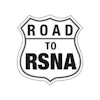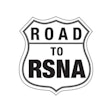Monday, November 27 | 9:50 a.m.-10:00 a.m. | M3-SSIN02-3 | S404
When a large academic health system used standardized consensus-based macros to track actionable incidental findings most found the macros helpful because they saved time and ensured appropriate follow-up, according to a project to be presented Monday.
During this session, Tianyuan Fu, MD, of University Hospitals in Ohio will discuss a macro-structured tool for documenting and tracking actionable incidental findings. Fu’s system of standardized macros covered pulmonary nodules, as well as liver, gallbladder, pancreas, renal, adrenal, spleen, adnexal, and thyroid lesions.
Each macro used for the tool included the location of the lesion, one recommended follow-up modality, the time interval for follow-up, and reference to an evidence-based recommendation. To reach consensus, the macros were reviewed and approved by a team of academic subspecialty radiologists and regional radiologists in the community. For tracking, developers tagged each macro option with a “signature” code.
Before using the tool, radiologists and residents were educated about the AIF tracking tool through demonstrations in faculty meetings, noon conferences, step-by-step instructions on the department intranet homepage, and email communication. Then, from January to October 2022, 3,991 pulmonary nodules (1,324 of which required follow-up per guidelines), 205 liver (50 requiring follow-up), 317 pancreas (all requiring follow-up), 306 renal, 13 spleen, and 505 thyroid lesions (204 requiring follow-up) were tracked using the macros. Web-based dashboards illustrated the frequency of different types of actionable incidental findings over time.
In a survey of radiologists participating in this actionable incidental finding tracking initiative, 70% reported using the macros for some, most, or all of these cases; 84% found the macros easy to adopt; 62% found that the tool saved time; and 92% indicated the tool ensured appropriate and up-to-date follow up according to the most recent societal guidelines.
Drawbacks noted were that radiologists needed reminders that system macros were available for a particular type of actionable incidental finding. In addition, some found the macros to be wordy or had individual preferences regarding the wording.
Prior to the intervention, there was no structured method for documentation and for tracking the frequency of these actionable incidental findings, according to Fu. Drop by the session to learn more.


